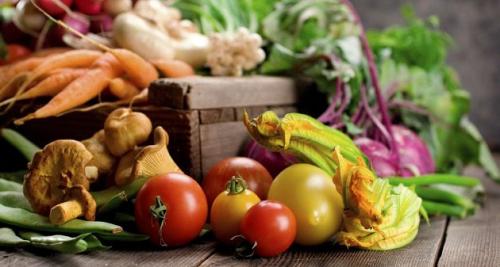Tips On Keeping Your Food Fresh For Longer

There are only really two things you need to know in order to keep your food fresh for longer. You need to know how to strategically organize food in your fridge and how to properly store your produce.
Organizing Your Fridge
The first thing you should know is that your refrigerator should always be kept at a temperature of 40°F or lower and freezers at 0°F. Refrigerators have different compartments that are meant for storing different products. These compartments have different temperature zones depending on how close they are to the cooling element of your fridge. If you don’t store your food in the right place in your fridge, the temperature of your food might not lower enough to keep them from spoiling.
1. Freezers
Freezers are obviously meant for frozen food. You should store ice, meat, frozen fruits and vegetables here. Pack your food tightly in plastic containers and organize them in the freezer to optimize storage.
2. Upper Shelves
Upper shelves have consistent temperatures so it’s best to store food that doesn’t have to be cooked here. This includes ready-to-eat foods like deli meats and tortillas, and leftovers and drinks. Unlike freezers, shelves should not be packed to prevent inconsistent temperatures and to promote the flow of cool air.
3. Lower Shelves
Lower shelves have the coolest temperature in the entire fridge, not including the freezer, of course. Raw meat, seafood, eggs, and dairy products are best placed here. Keep the bacteria in raw meat from spreading to your other foods by designating a section of your fridge solely for meat. Keep the meat in its original packaging, or wrap it yourself in plastic wrap, or use an improvised bin which should be regularly cleaned.
4. Crisper Drawers
Keep fruits and vegetables in crisper drawers to keep them moist and preserved. Make sure you separate fruits from vegetables because most fruits release ethylene to help them ripen but will cause vegetables to go yellow and limp.
5. Doors
Doors have the warmest temperature in the entire fridge and are thereby best for foods that are most resistant to spoiling. This includes juices, water, and condiments. Eggs and dairy products should not be stored here.
Store Your Produce
1. Bananas. Wrap the crown, or the area where the banana stems meet, with plastic wrap to make them last longer. Bananas release ethylene, the gas that make fruits ripen, in their stem so wrapping it in plastic wrap will keep the gas from reaching and ripening the rest of the banana.
2. Celery. Wrap celery in aluminium foil to keep them crisp for up to five weeks.
3. Asparagus. Keep your asparagus vertically in a glass of water. The asparagus will drink the water in the glass, just like fresh-cut flowers, thereby keeping them fresh for longer.
4. Strawberries. The best way to store strawberries is by washing them first in a vinegar bath. Combine a cup of vinegar and three cups of water in a container and place all your strawberries in. Spread them around before rinsing the mixture off and allowing them to dry. Then simply store them in your fridge. These strawberries will last a week longer since the vinegar will prevent mold from forming too quickly.
5. Cookies. Store cookies in a Ziploc with a slice of bread to keep them moist.
6. Sliced Avocado. Refrigerate in a container with half an onion. The onion will release sulphuric acid which helps prevent browning. Alternatively, you can squeeze a bit of lemon juice on the avocado and store it in a wrap, cut-side down.
7. Brown Sugar. Store brown sugar in a container with marshmallows to keep them soft by absorbing the excess moisture.
8. Tomatoes. Do not refrigerate tomatoes. Instead, store them at room temperature.
9. Onions, Squash, Potatoes. Store in a cool environment with low moisture such as a dark cupboard, as long as it’s outside the fridge.
10. Lettuce. Keep your lettuce in a plastic bag with paper towel. The paper towel will absorb any excess moisture that will cause the lettuce to go limp.